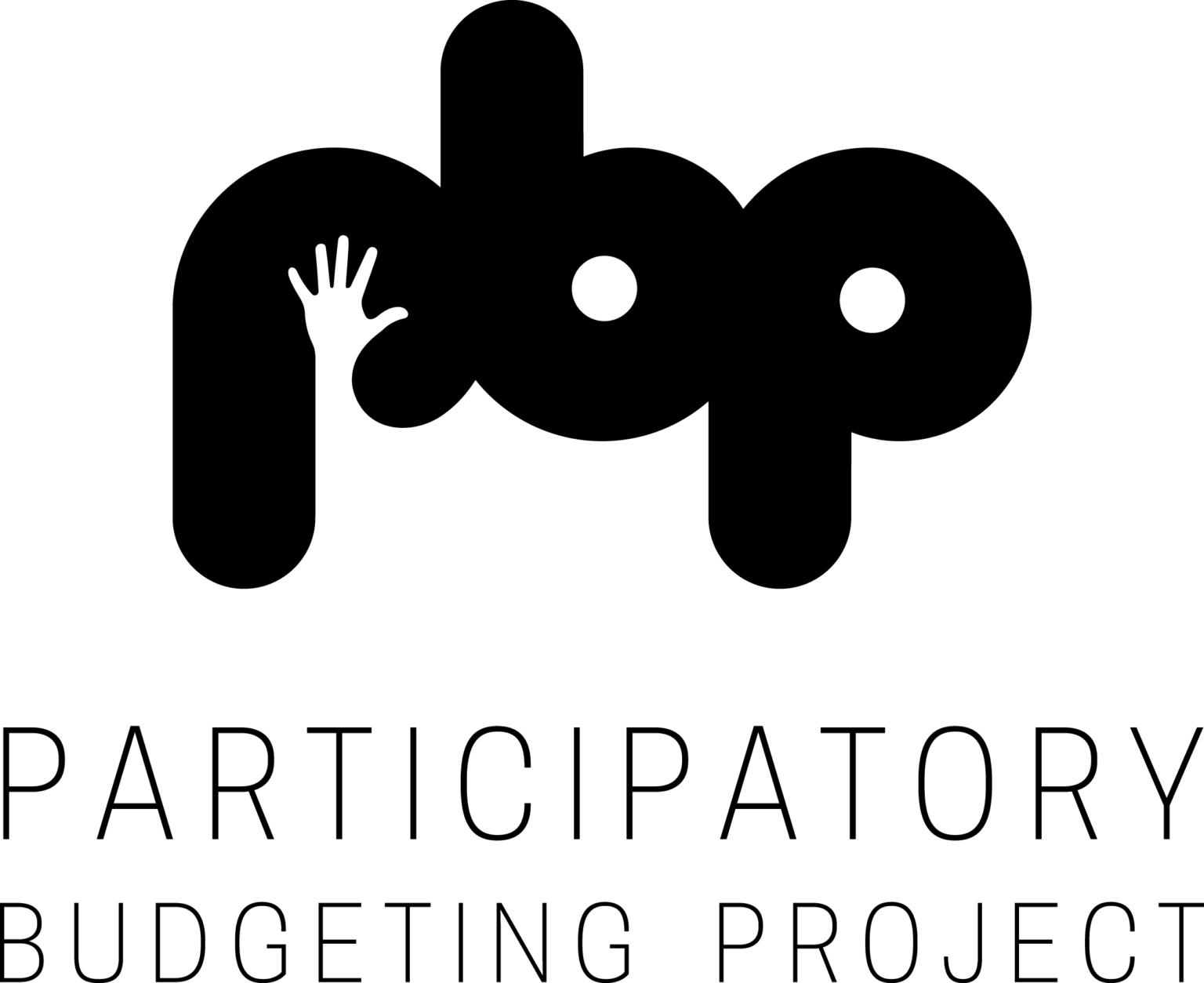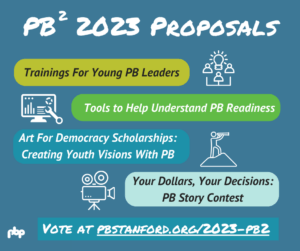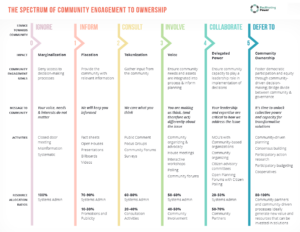Introducing tools, a report, and a lab call to help you keep tabs on the papers, platforms, and projects in PB:
She sighed in response to our question, and then shared, “We probably spent two whole days putting in ideas, and that was the only thing we did all day…” Her fellow PB staffer added to this by explaining that together, they spent just over 30 hours entering project ideas into one place.
We’ve heard similar sighs and statements from PB staffers across the U.S. and Canada. One staffer described the process of transcribing project ideas from paper to digital platforms as the single most time-consuming task in the idea collection phase of PB: “You have some ideas coming in in English and others in Spanish, you have ideas that don’t make sense until you read the entire entry, and it takes time to transcribe.”
If these remarks resonate with you, or if you’ve felt overwhelmed by a case of information overload during a PB process, you’re not alone! As you likely know, coordinating a successful PB process relies on tracking and sharing lots of information—both internally and with participants like steering committee members, budget delegates, and the public more broadly.
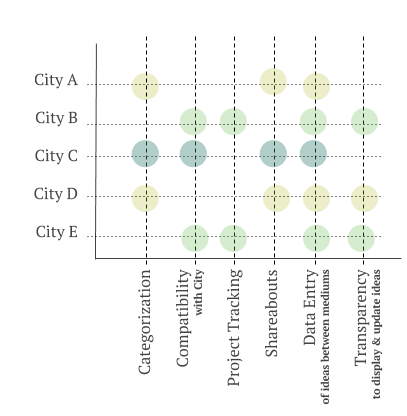
This figure identifies six common pain points in managing information in PB.
Have you experienced any of these?
At PBP, we’ve been working with designers and technologists to develop tools to make your work managing information easier and less time-consuming. Our goal is to transform this into a democracy made by you process. We interviewed seven staffers who manage PB to learn about how they complete information management tasks—especially those related to organizing ideas as they move through the PB process.
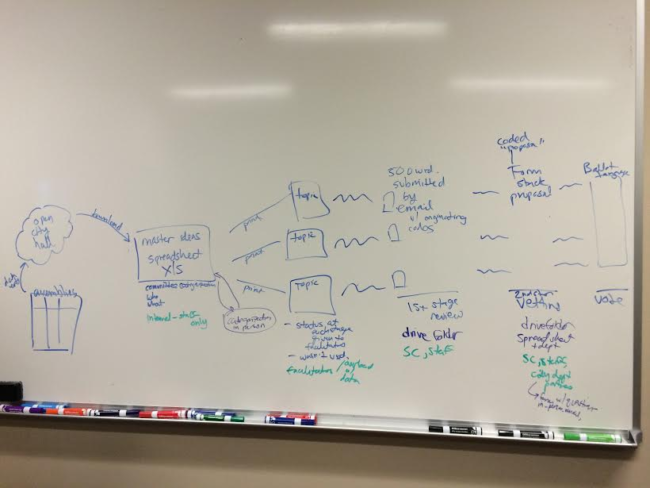
This drawing of the workflow for one PB process highlights the complexities of managing information in PB. We recommend drawing out your plan to help you visualize and simplify your workflow.
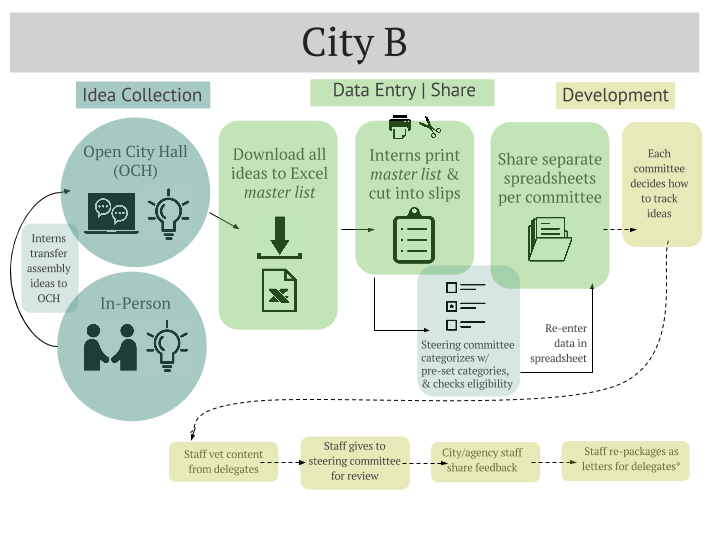
Each city we interviewed took four to 10 steps to manage information from idea collection to proposal development. How does your workflow compare to this one? See our Fact-Finding Report for more workflows like this one, and for a list of icons used in this diagram from thenounproject.com.
After analyzing our interviews, we put together a report and a tip sheet full of facts and visualizations to highlight what we learned.
Three of our top takeaways taught us:
- While all city processes we looked into used Google spreadsheets and Excel spreadsheets to organize information, nearly every staffer we spoke with mentioned that PB participants preferred generating ideas on paper or verbally. This called our attention to a need to simplify digital platforms, make digital capture easier, and make the process more user friendly for both participants and staff.
- Entering data (including information about ideas and their submitters) between paper, platforms, and people was a common challenge experienced in each of the five PB processes we explored. This pain point involved difficulties with transcribing and transferring ideas, as well as categorizing and updating them—and doing so using tools that were compatible with platforms the city used.
- As digesting giant spreadsheets of information can be overwhelming, many PB staffers asked how to effectively share ideas with participants across all levels of comfort using digital tools. More broadly, staffers we spoke with asked for support improving the tools they use to manage information and the workflows they take to do so.

Try one or all of these to simplify your process!
See our tip sheet for more details on each!
We’re excited to share details about these takeaways—and many more—with you! Take the first step towards simplifying how you collect and manage information in your PB process by downloading out tip sheet: [wpdm_package id=’9918′]
Or, by registering for our Participation Lab call titled, “You’ve Collected Input: Now What? Processing and working with large amounts of civic data.” [RSVP for our call here!]. Help us make PB a democracy made by you process.
We’ll share an overview of the tip sheet and release our Fact-Finding Report during our Lab call on Friday, October 28th—along with two other technologists who deal with large amounts of civic information.
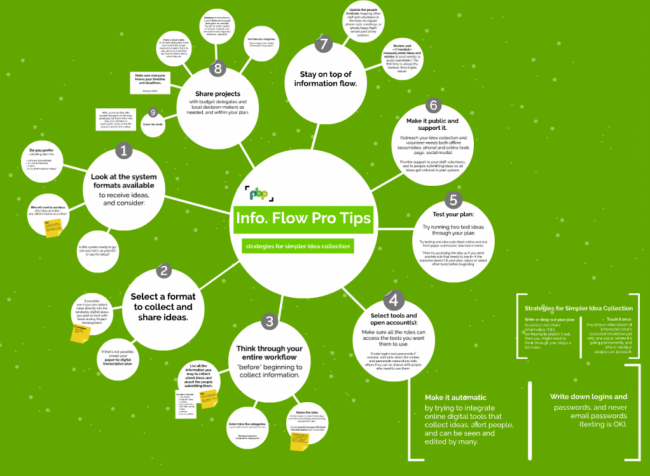
Check out the visual version of our tip sheet to work through the pain points in your PB process! [tinyurl.com/InfoFlowProTips]
We hope our new tools, report, and Lab call will help you simplify and streamline how you enter data and manage information so that you can “ctrl” cases of overload and focus your time and energy where it matters most—on the people and projects in your PB process!
We hope to see you on the Participation Lab call on the 28th!

